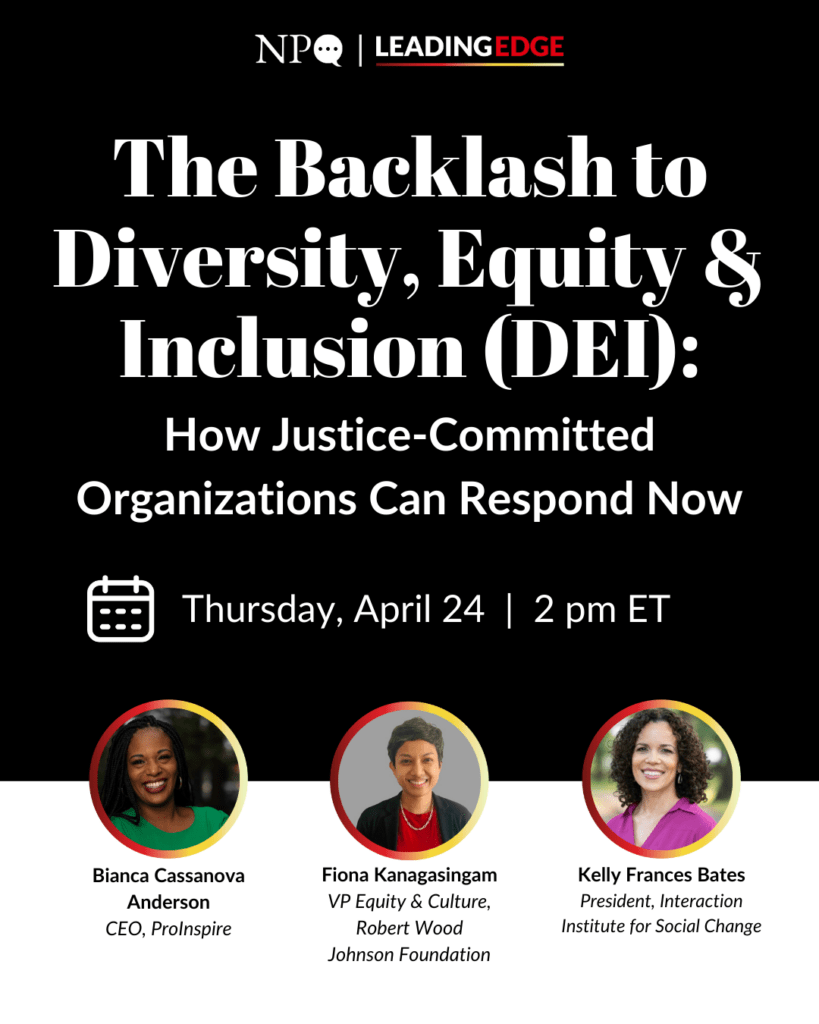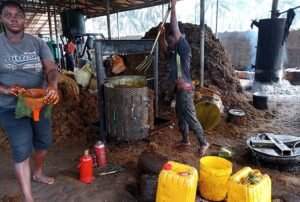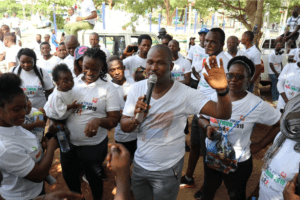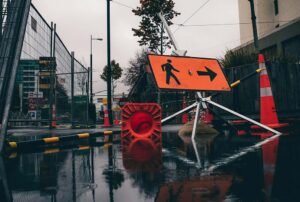
Editors’ note: This piece is from Nonprofit Quarterly Magazine’s winter 2024 issue, “Health Justice in the Digital Age: Can We Harness AI for Good?”
My ancestors were sent to Native American boarding schools, some operated by religious organizations, some by the Bureau of Indian Affairs.1 There we were taught the latest agricultural, home economic, and family health technologies that had almost no relevance to the agroecological and climate zones we lived in or the health problems that our people faced. Given the influence of Indigenous females on future generations, Native American girls were special targets of the cultural assimilation lessons of these boarding schools. In the 1960s and 1970s, health providers contracted by the Indian Health Service—the entity created to provide tribally enrolled Native Americans with healthcare in exchange for the land from which we were forcibly removed—used medical technologies to sterilize our women without their consent.2 The facilities available to my relatives in eastern Oklahoma have been noted as offenders.3
Today, Native American women are flipping the script and leading the fight to create and harness technologies for our people’s benefit.4 We are involved in health-focused, Native American–led program development, advocacy, research, and policy change.5 We know that our Indigenous culture is key to our health, which foods are nutritious for our families, and how to sustain our Mother Earth to thrive. We are forming collectives that enable our sisters and brothers to gain access to reproductive and gender-affirming care if and when their tribal governments (though legally sovereign nations) are located in states that have imposed legal restrictions on such services.6 Most non-Natives are unaware that the Indian Health Service is considered a federal provider and thus is subject to Hyde Amendment restrictions that ban abortion care.7 This is unacceptable for people who belong to federally recognized tribes that hold politically sovereign status.
Central to our health justice movements are inter- and intragenerational social solidarity—and when combined with strengthened cultural identity and recognition of our tribal sovereignty, this is triply powerful for Indigenous people. As a Native American health economist who has worked with Indigenous populations across the globe for two decades, I felt the need to come home and help strengthen health justice for Native American girls, women, and gender-fluid people. In 2022, I started Indigenous Justice Circle (IJC), a Native female–led nonprofit whose work focuses on health equity, gender-transformative justice, and combating the Missing and Murdered Indigenous Persons (MMIP) epidemic.8 IJC uses technology to enhance the health impact of our work.9 Our theory of change is that the combination of female intra- and intergenerational social capital, cultural identity, and tribal sovereignty—all supercharged with technology tools—bolsters our bodily autonomy, keeps us safer and healthier, and allows us to exercise our political and economic rights that allow us to maintain these freedoms.
At [Indigenous Justice Circle], we are attempting to partner with large research universities and nonprofits and simultaneously change their inequitable culture and practices, including the lack of respect they give to Native people.
Primary technologies for building and maintaining modern health justice movements are artificial intelligence, geolocation,10 and social media. These tools, all packed into mobile phones to which many (but not all) people now have access, are in and of themselves becoming determinants of our health and can function for good or evil, depending on who is controlling and monitoring them. At IJC, we are harnessing these technologies to establish a collective movement built upon genuine human reciprocal relationships for Indigenous community benefit, moving beyond the atomized virtual world of accumulating individual “followers” and “likes” merely for social media ascendancy.
Across Indigenous geographies, IJC equips local tribal actors to establish physical support groups to increase female safety and skills and to serve as a Missing and Murdered Persons’ early warning system.11 Depending on the age cohort of the specific group, girls, women, and/or Two-Spirit and transgender Indigenous persons are invited to gather on a regular (weekly or fortnightly) basis. Attendance is kept electronically, in an encrypted, password-protected secure app our team designed. If participants miss more than one meeting without being in touch with us, the mentor for the group checks in about their wellbeing. The aim is to take action before someone has been missing for too long. These in-person groups are supplemented by virtual support groups, especially among those relatives who have left their tribal communities to earn a living or pursue educational opportunities in urban areas with which they may be unfamiliar.
Navigating these new environments and going back and forth to one’s tribal home is a particular challenge, given the economic and transportation constraints many Native Americans face. IJC uses geolocation technology to enable our support group participants to map safe and unsafe places in the areas they navigate. In these groups, mentors, mentees, and peers are encouraged to use safety-enhancing apps that allow them to share their cell phone location and/or to provide key words or emojis to signal that they need help. We provide girls, women, and Two-Spirit and transgender people with training in online safety, such how to spot sex and labor traffickers, as well as ways to avoid the mental health dangers of social media algorithms designed to increase screen time solely for corporate profit. We inform girls, women, and Two-Spirit and transgender people of helplines such as 911, 988, and Native-specific versions, such as the StrongHearts Native Helpline (1-844-7NATIVE [762-8483]). We are using AI to help predict which situations (working at night, residing in a rooming house, and so on) and geographic areas present heightened risk of violence, assault, or abduction for Indigenous girls, women, and Two-Spirit and transgender people. Furthermore, we emphasize that whether to get to school, to go shopping, or to apply for a job, wrapping oneself in a cloak of protective social capital is key to bodily safety and autonomy. We provide reminders to go with a friend, urging both to have their cell phones in hand and ready to send “help” key words or emojis in case something goes wrong. Self-defense training and the confidence it can bring are included in our support groups, be they in person or virtual.
Sign up for our free newsletters
Subscribe to NPQ's newsletters to have our top stories delivered directly to your inbox.
By signing up, you agree to our privacy policy and terms of use, and to receive messages from NPQ and our partners.
As a health equity researcher striving to use my global experience to benefit Native American communities, strategies to claim and operationalize Indigenous data sovereignty are top of mind. Most of us know about the Havasupai case12 and Henrietta Lacks.13 Universities can do much better to partner with racial and ethnic minority–led organizations. At IJC, we are attempting to partner with large research universities and nonprofits and simultaneously change their inequitable culture and practices, including the lack of respect they give to Native people. This is not just with regard to protecting our traditional Indigenous knowledge but also to ensure ownership rights and control of newly produced data that result from the research collaboration. I am in conversation with United Nations Declaration on the Rights of Indigenous Peoples (UNDRIP) experts, community representatives on the United Nations Permanent Forum on Indigenous Issues (UNPFII), and Native American data sovereignty consultants, and am accessing the resources provided by the Native American Rights Fund and the Seattle Urban Indian Health Institute. Even with that assistance, I have not found sample intellectual property templates available for Native American-led nonprofits aiming to engage in research with non-Native entities such as large research universities. (IJC is currently working on a template that can serve as a model for others in our position.)
While Native American tribes and peoples are increasingly protected by ethical review boards, these present large and lengthy processes for small Native American–led organizations such as mine to navigate.14 What is more, having served on a non-Indigenous global health institutional review board for more than a decade, I know firsthand that serving in this capacity can trigger trauma for some of us from the trenches who have various lived experiences
that we find described in the research protocols we review. That makes us experts—but that expertise comes at a price.
Native American health researchers need allies to better ensure that Indigenous people not only drive and design health projects but also create, access, and control the data generated from them. We need the following as allies: AI experts; systems administrators and software engineers; philanthropic donors; local, federal, and state governments; universities; non-Native nonprofits; and legal experts on international Indigenous and US Native American legal and intellectual property rights. We will no longer accept being researched on—we deserve to lead the research that is about our families and communities.
Notes:
- See, for example, “US Indian Boarding School History,” National Native American Boarding School Healing Coalition, accessed January 6, 2025, boardingschoolhealing.org/education/us-indian-boarding-school-history/; “Federal Indian Boarding School Initiative,” Indian Affairs, U.S. Department of the Interior, accessed January 6, 2025, www.bia.gov/service/federal-indian-boarding-school-initiative; Bryan Newland, Federal Indian Boarding School Initiative Investigative Report (Washington, DC: United States Department of the Interior, May 2022); and “Federal Indian Boarding School Initiative,” U.S. Department of the Interior, accessed January 6, 2025, www.doi.gov/priorities/strengthening-indian-country/federal-indian-boarding-school-initiative.
- Jane Lawrence, “The Indian Health Service and the Sterilization of Native American Women,” American Indian Quarterly 24, 3 (Summer 2000): 400–419; Jane A. Lawrence, “Indian Health Service: Sterilization of Native American Women, 1960s–1970s” (master’s thesis, Oklahoma State University, 1999), core.ac.uk/reader/215188970; and Brianna Theobald, “A 1970 Law Led to the Mass Sterilization of Native American Women. That History Still Matters,” TIME, last modified November 28, 2019, time.com/5737080/native-american-sterilization-history/.
- See Jane Lawrence, “The Indian Health Service and the Sterilization of Native American Women”; and “Investigation of Allegations Concerning Indian Health Service,” S. Government Accountability Office, November 4, 1976, www.gao.gov/products/hrd-77-3.
- “Sarah EchoHawk (Pawnee),” Advancing Indigenous People in STEM, accessed January 6, 2025, org/people/sarah-echohawk/; “Increasing Representation of Native Americans in STEM and Innovation,” U.S. Department of Commerce (blog), November 23, 2022, www.commerce.gov/news/blog/2022/11/increasing-representation-native-americans-stem-and-innovation; Women of Silicon Valley, “Just 18 Really Awesome Native Folks in STEM,” Medium, November 29, 2017, medium.com/women-of-silicon-valley/just-18-awesome-native-folks-in-stem-134211ff14cd; and “11 Indigenous Women Scientists to Follow,” Cultural Survival, February 10, 2023, www.culturalsurvival.org/news/11-indigenous-women-scientists-follow.
- “Native Women’s Equal Pay Day 2024,” PowHerNY, November 21, 2024, powherny.org/2024/11/21/native-womens-equal-pay-day-2024/; Nandita Bajaj et al., Revitalizing Population and Development in the 21st Century (Washington, DC: The Population Institute, 2024); “Roselyn Tso, Director Indian Health Service,” April 2024, www.ihs.gov/sites/aboutihs/themes/responsive2017/display_objects/documents/bios/RoselynTso-Bio.pdf; “Lucy Rain Simpson,” National Indigenous Women’s Resource Center, accessed January 6, 2025, www.niwrc.org/staff/lucy-rain-simpson; “Eve Tuck, Professor of Indigenous Studies, James Weldon Johnson Professor,” Steinhardt School of Culture, Education, and Human Development, New York University, accessed January 6, 2025, steinhardt.nyu.edu/people/eve-tuck; and “Rebecca Nagle Joins the NYU-Yale American Indian Sovereignty Project,” Yale Group for the Study of Native America, Yale University, August 21, 2023, ygsna.sites.yale.edu/news/rebecca-nagle-joins-nyu-yale-american-indian-sovereignty-project.
- “Building the Fire Fund,” Solidaire, accessed January 6, 2025, org/how-we-partner/building-the-fire-fund/; Noel Lyn Smith and Maddy Keyes, “Indigenous people unite to navigate abortion access after Roe,” The 19th, October 11, 2023, 19thnews.org/2023/10/indigenous-people-abortion-access/; and “Meet the 2023 cohort of Indigenous Young Leaders,” Indigenous Justice Circle, accessed January 6, 2025, www.indigenousjc.org/iyl.
- “Use of Indian Health Service Funds for Abortions,” Indian Health Service Circular 22-15, Indian Health Service, accessed January 6, 2025, www.ihs.gov/ihm/circulars/2022/use-of-indian-health-service-funds-for-abortions/; and Anna Schwartz, “Indian Health Service Publishes Circular No. 22-15 Clarifying Abortion Policies for Indian Country,” National Council of Urban Indian Health, August 8, 2022, ncuih.org/2022/08/08/indian-health-service-publishes-circular-no-22-15-clarifying-abortion-policies-for-indian-country/.
- “Who We Are,” Indigenous Justice Circle, accessed January 6, 2025, indigenousjc.org/; “Missing and Murdered Indigenous Women (MMIW),” Native Hope, accessed January 6, 2025, www.nativehope.org/missing-and-murdered-indigenous-women-mmiw; and “Missing and Murdered Indigenous People (MMIP),” Administration for Native Americans, U.S. Department of Health & Human Services, last modified May 16, 2024, www.acf.hhs.gov/ana/priorities/missing-and-murdered-indigenous-people.
- Kelly Hallman et al., IMAGEN: Shifting Native American Youth Programming to a Gender Focus through Intentional Design Methods (New York: The Adolescent Girls Community of Practice, Population Council, 2021), knowledgecommons.popcouncil.org/cgi/viewcontent.cgi?filename=0&article=2383&context=departments_sbsr-pgy&type=additional; and Indigenous Adolescent Girls’ Empowerment Network (IMAGEN) (New York: The GIRL Center, Population Council, 2018), www.indigenousjc.org/s/IMAGENBrief2.pdf.
- Cameron Hashemi-Pour, “What is geolocation? Explaining how geolocation data works,” TechTarget, last modified August 2024, techtarget.com/searchmobilecomputing/definition/What-is-geolocation; and “Telehealth,” Indian Health Service, accessed January 6, 2025, www.ihs.gov/telehealth/.
- Kelly Hallman (enrolled, Cherokee Nation), Indigenous Justice Circle, “Strengthening Inclusion, Safety, and Democracy with American Indian Girls and Women to Benefit Indigenous Communities,” in The Minority Report, no. 17 (Winter 2025), 14–16, www.aeaweb.org/content/file?id=21964.pdf; “The Missing and Murdered Indigenous Women and Girls Crisis,” ArcGIS StoryMaps, January 30, 2023, storymaps.arcgis.com/stories/2af4da6f180542ba94f19b5688586536; and Kelly Hallman, Lisa Polen, and Katey Peck, The IMAGEN Story: A Framework for Restoring Indigenous Girl Societies (New York: The Indigenous Adolescent Girls’ Empowerment Network [IMAGEN], 2021).
- Matthew M. Fletcher, “NYTs Article on Havasupai Settlement,” Turtle Talk (blog), April 22, 2010, turtletalk.blog/2010/04/22/nyts-article-on-havasupai-settlement/; and Amy Harmon, “Indian Tribe Wins Fight to Limit Research of Its DNA,” New York Times, April 21, 2010, www.nytimes.com/2010/04/22/us/22dna.html.
- Winston Thompson et al., “The Instrumental and Immortal Life of Henrietta Lacks,” Morehouse School of Medicine, accessed January 6, 2025, www.msm.edu/the-immortal-life-of-henrietta-lacks/index.php; and Joe Hernandez, “Henrietta Lacks’ descendants reach a settlement over the use of her ‘stolen’ cells,” Short Wave, August 1, 2023, www.npr.org/2023/08/01/1191283359/henrietta-lacks-descendants-settlement-stolen-cells.
- See, for example, Nicole Kuhn et al., “Indigenous research ethics and Tribal Research Review Boards in the United States: examining online presence and themes across online documentation,” Research Ethics 20, no. 3 (2024): 574–603.









